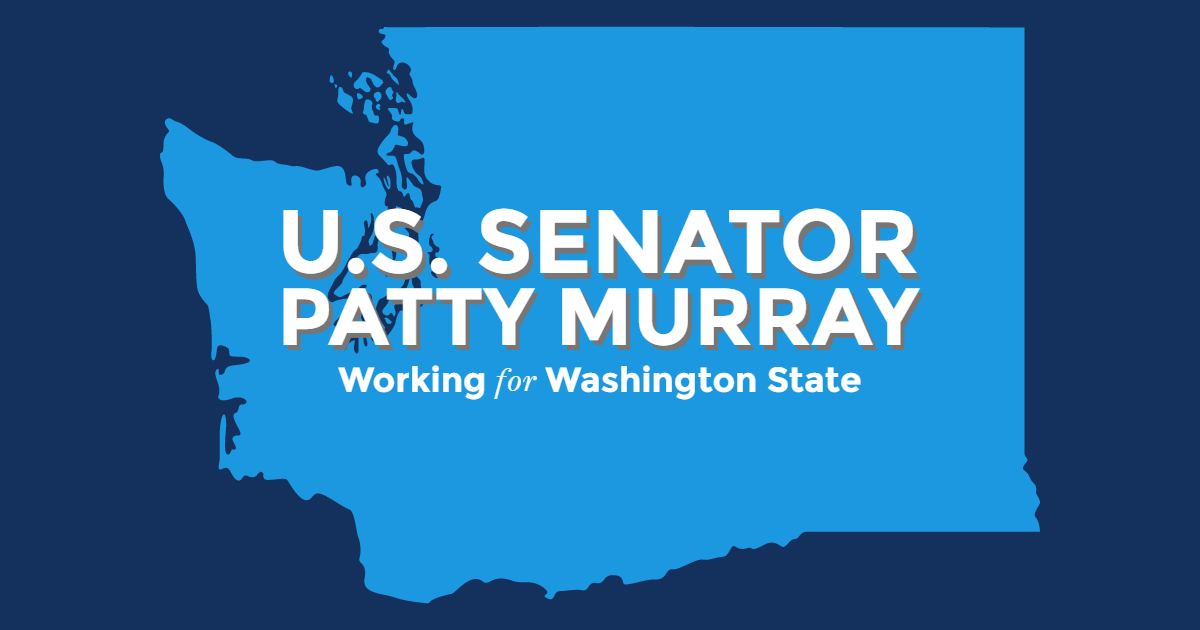Source: United States Senator for Washington State Patty Murray
Senator Murray: “I am firmly committed to making sure the federal government is doing its part to recover our iconic salmon runs.”
(Washington, D.C.) – U.S. Senator Patty Murray (D-WA), today helped pass the bipartisan Infrastructure Investment and Jobs Act. The bipartisan package includes $1 billion for culvert removal, replacement, and restoration; $172 million for the Pacific Coastal Salmon Recovery Fund (PCSRF); and $207 million for the Coastal Zone Management Program, among other habitat investments.
“Like so many of us, I am firmly committed to making sure the federal government is doing its part to recover our iconic salmon runs,” said Senator Patty Murray. “I’m glad we were able to secure important federal investments to help bolster salmon populations throughout the Pacific Northwest, like money for culvert repair, the Pacific Coastal Salmon Recovery Fund, and important habitat restoration efforts. As we look toward the budget reconciliation package and the Senate’s annual appropriations process, I’ll keep fighting for significant funding to protect and restore this critical part of our state and our Tribes’ environment, heritage, and future.”
Culvert Removal, Replacement, and Restoration
The $1 billion allocated for culverts will provide grants to states for the removal, replacement, and restoration of culverts to address flow of water through roads, bridges, railroad tracks, and trails. The competitive grant program will be administered by the Department of Transportation in close consultation with the National Oceanic and Atmospheric Administration (NOAA) and the US Fish and Wildlife Service (USFWS).
Pacific Coastal Salmon Recovery Fund
The Pacific Coastal Salmon Recovery Fund was founded by Congress to reverse the decline of West Coast salmon and steelhead. This competitive grants program provides funding to states and tribes to protect, conserve, and restore these populations. In Washington state, the PCSRF works through the Salmon Recovery Funding Board (SRFB) which provides grants on a competitive basis to a variety of habitat protection and restoration programs. Projects have included fixing or removing obstacles to fish migration, opening up streams for salmon habitat, planting trees and shrubs along streams to provide ideal habitat conditions, decreasing the amount of soil flowing into streams, changing river flows and opening miles of transition areas for salmon headed to and from the sea. According to NOAA, several studies indicate that a $1 million investment in watershed restoration creates between 13 and 32 jobs and $2.2 and $3.4 million in economic activity.
National Coastal Zone Management Program
The National Coastal Zone Management Program works with coastal states and territories to address some of today’s most pressing coastal issues, including climate change, ocean planning, and planning for energy facilities and development. The program is a voluntary partnership between the federal government and states. The program is administered by NOAA. The Washington Coastal Management Program, approved by NOAA in 1976, was the first approved program in the nation. The Department of Ecology serves as the lead coastal management agency. The primary authority for the coastal management program is the Shoreline Management Act of 1971. The Washington coastal zone includes the state’s 15 coastal counties that front saltwater.
Other Habitat Investments
The bill includes other habitat investments important to salmon recovery, including:
- $79 million for the Puget Sound EPA Geographic Program
- $79 million for the Columbia River Basin EPA Geographic Program
- $200 million for the NOAA Marine Debris Program—$50 million of which will go through the National Sea Grant College Program
- $400 million for restoring fish passage through NOAA—15% of which is set aside for Tribes and Tribal partnerships
- $200 million for the USFWS National Fish Passage Program
###
